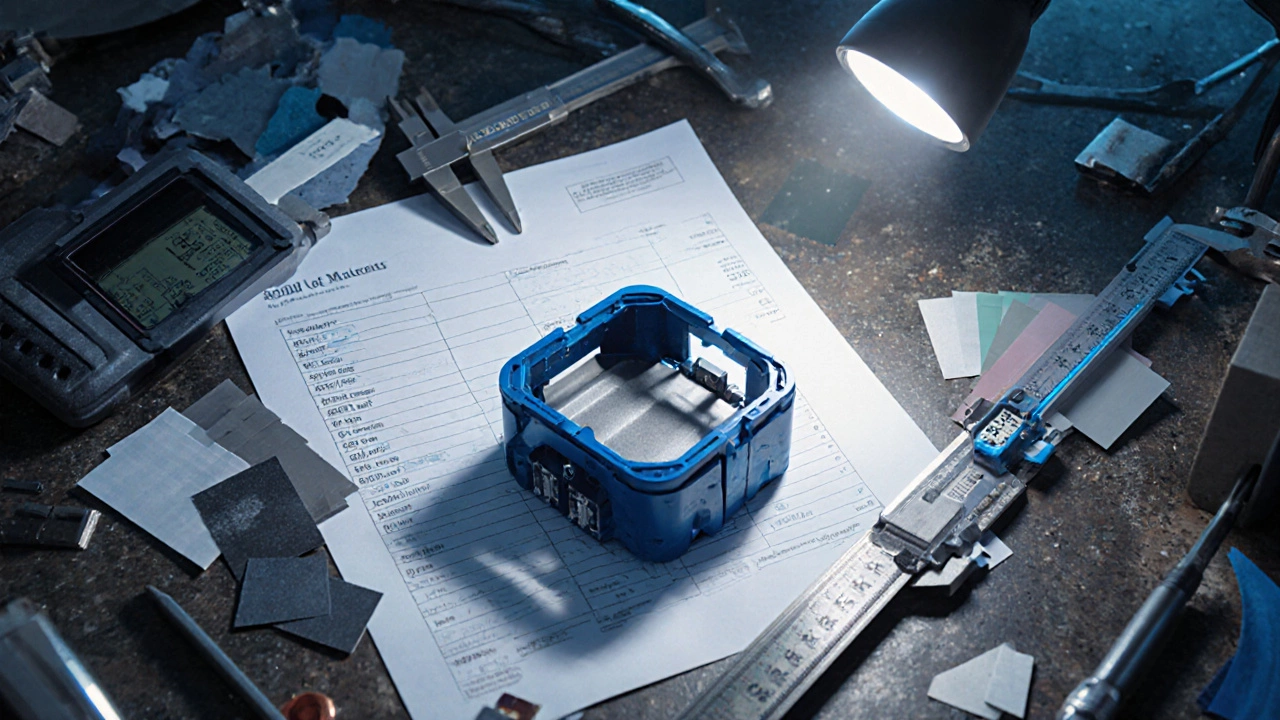Manufacturer Margin Calculator
This calculator helps you determine if your product pricing meets the industry standard of at least a 30% margin after the manufacturer's costs, as recommended in the article.
When you have a hot product idea, the biggest hurdle is getting a manufacturer to take a chance on it. A well‑crafted pitch your idea to a manufacturer can turn a notebook sketch into a production line, but many founders stumble on the basics: what to show, how to talk, and which numbers matter.
What a Manufacturing Pitch Actually Is
Manufacturing Pitch is a concise presentation that convinces a factory to produce a new product. It blends market insight, technical feasibility, and financial upside into a story that answers the manufacturer’s three core questions: "Will it sell?", "Can we build it?", and "Is it profitable for us?"
Step 1 - Validate the Idea with Market Research
Before you even draft a deck, you need proof that customers want what you’re selling. Pull together sales data from similar products, conduct surveys, or run a small pre‑order campaign. Quantify the demand: a target of at least 5,000 units in the first six months gives a manufacturer confidence that the line won’t sit idle.
Step 2 - Build a Prototype That Shows Real‑World Function
A prototype turns abstract concepts into tangible objects. It doesn’t need to be production‑grade, but it should demonstrate key features, ergonomics, and material choices. When you can hand a sample to the factory’s engineering team, you cut weeks of back‑and‑forth.
Step 3 - Draft a Detailed Bill of Materials (BOM)
Bill of Materials is a spreadsheet listing every component, raw material, and sub‑assembly needed for one unit of your product. Include part numbers, suppliers, unit costs, and lead times. A clear BOM lets the manufacturer run a quick cost model and spot any supply‑chain risks.
Step 4 - Prepare Financials: Cost Analysis and Pricing
Manufacturers care about margins. Break down your projected cost per unit (materials, labor, tooling, overhead) and compare it to your intended retail price. Aim for at least a 30 % margin after the manufacturer’s margin is taken out. Show a simple profit‑and‑loss forecast for the first 12 months.

Step 5 - Craft a Compelling Value Proposition
Explain why your product stands out. Is it lighter, cheaper, greener, or more user‑friendly than existing options? Tie the benefit directly to a market pain point you uncovered in Step 1. This narrative helps the factory see the long‑term demand for your design.
Step 6 - Protect Your Idea with a Non‑Disclosure Agreement (NDA)
Non‑Disclosure Agreement is a legal contract that restricts the manufacturer from sharing or using your proprietary information without permission. Have a short, clear NDA ready before the first meeting; most factories are accustomed to signing one.
Step 7 - Assemble the Pitch Deck
Keep the deck to 10-12 slides. A typical flow looks like this:
- Problem & Market Opportunity
- Product Overview & Prototype Photos
- Bill of Materials (high‑level)
- Cost & Pricing Model
- Production Volume Forecast
- Value Proposition & Competitive Landscape
- Timeline & Required Support from Manufacturer
- Team & Track Record
Each slide should have a headline, a visual (photo, chart, or diagram), and a few bullet points. Avoid dense paragraphs; manufacturers skim fast.
Step 8 - Highlight Production Capacity and Lead Time
Production Capacity refers to the maximum number of units a factory can produce per month without compromising quality. Ask the plant about its typical lead times for tooling, pilot runs, and full‑scale production. Align these dates with your market launch plan.
Step 9 - Address Quality Assurance and Certification
Manufacturers want to know you care about product safety and compliance. If your product needs UL, CE, or FDA approval, mention the required certifications and who will bear the testing costs. A brief QA plan (incoming inspection, in‑process checks, final testing) reassures the plant that you won’t raise quality issues later.

Step 10 - Follow‑Up and Negotiate Terms
After the meeting, send a thank‑you email with a PDF of your deck and a copy of the NDA. Expect a few rounds of negotiation on tooling fees, minimum order quantities (MOQ), and payment terms. Be ready to compromise on non‑critical items while protecting your core margins.
Pitch Materials Checklist
| Item | Purpose | Tips for Success |
|---|---|---|
| One‑page Executive Summary | Quickly convey market size and profit potential | Use bold numbers, keep it under 200 words |
| Prototype or 3D renderings | Show physical form and key functions | Highlight unique features with call‑outs |
| Bill of Materials (high‑level) | Enable cost calculations | Include supplier names and unit costs |
| Cost & Pricing Model | Demonstrate profit margins | Show best‑case and worst‑case scenarios |
| Non‑Disclosure Agreement | Protect intellectual property | Bring a signed copy; ask for theirs in return |
| Production Timeline | Set expectations for lead times | Align with marketing launch dates |
| Certification Plan | Show compliance pathway | Identify which tests you’ll handle vs. the factory |
Common Mistakes to Avoid
- Skipping market validation - factories want proof of demand.
- Over‑promising on price or lead time - it erodes trust quickly.
- Leaving the NDA out of the conversation - you signal that you don’t care about IP.
- Providing vague BOMs - without component details the factory can’t quote accurately.
- Ignoring quality standards - a cheap prototype may be fine, but mass production must meet regulations.
Next Steps After a Successful Pitch
When the manufacturer signs off on your concept, you’ll move into tooling design, pilot runs, and finally full‑scale production. Keep the communication channel open, monitor the pilot batch closely, and be ready to tweak the design based on real‑world feedback.
Quick FAQ
How much should I expect to pay for tooling?
Tooling costs vary widely, but for a plastic injection mold they usually range from $5,000 to $30,000 depending on part complexity and cavity count. Ask the factory for a detailed breakdown before signing.
What is a realistic MOQ for a new product?
Many small‑scale manufacturers start at 500-1,000 units. If you need fewer, look for factories that offer short‑run or 3D‑printed pilot services, albeit at higher per‑unit cost.
Do I need a patent before pitching?
A provisional patent can protect your idea while you seek a manufacturing partner, but it’s not mandatory if you have a solid NDA and keep the design confidential.
How can I estimate my product’s retail price?
Start with the landed cost (materials + labor + shipping + tariffs). Add a 50‑60 % markup for wholesale distributors, then another 30‑40 % for retailers. Adjust based on competitor pricing.
What if the factory asks for design changes?
Be open to suggestions that reduce cost or improve manufacturability. Document any changes in a revised BOM and update your cost model before agreeing.





